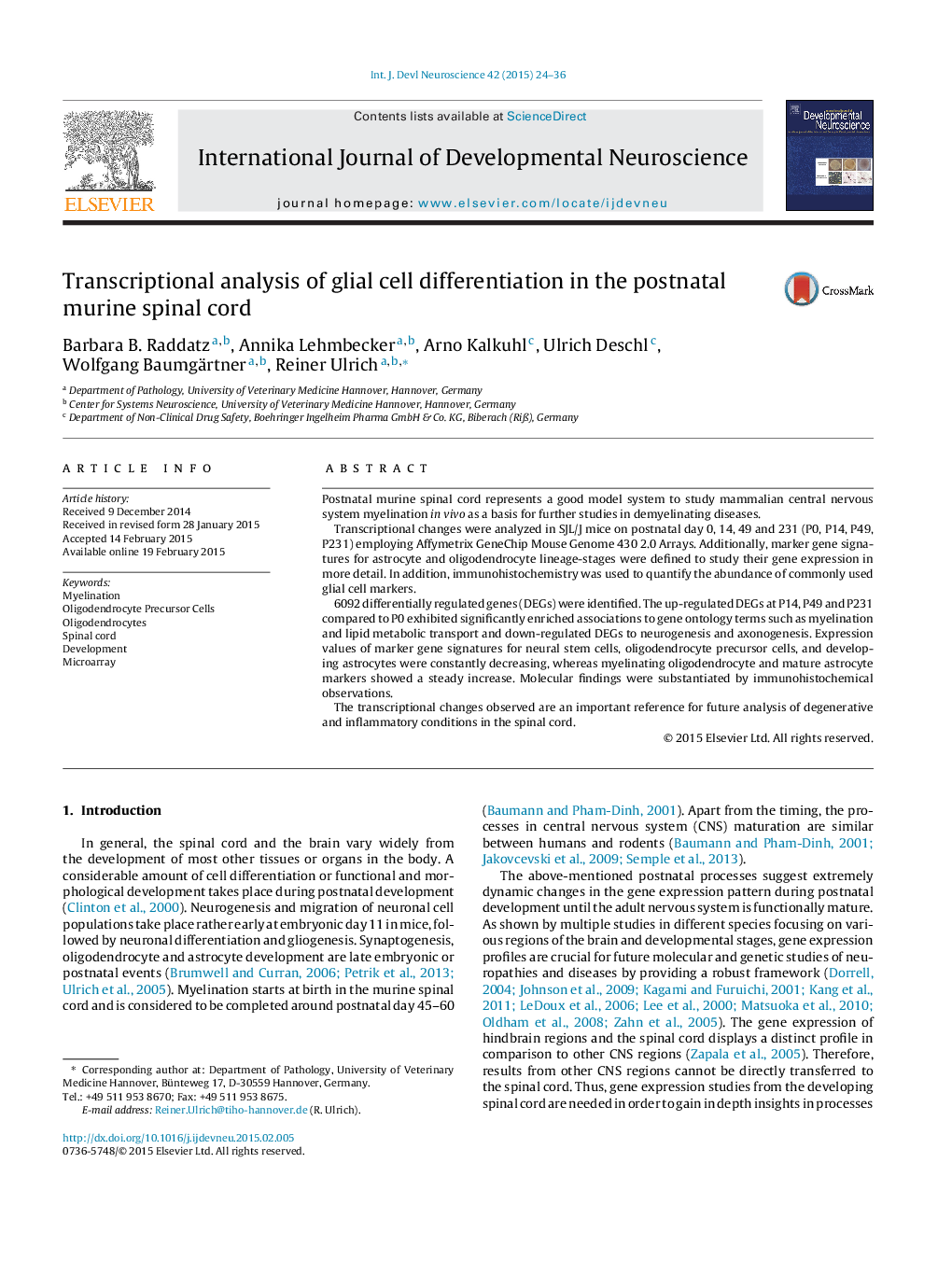| Article ID | Journal | Published Year | Pages | File Type |
|---|---|---|---|---|
| 2785873 | International Journal of Developmental Neuroscience | 2015 | 13 Pages |
•Most prominent changes are seen in the first two weeks of postnatal development.•Functional annotation indicates a continuous high rate of myelin gene expression.•There is a necessity of a better annotation of the GO-term “myelination”.•Oligodendrocyte precursor cells seemed to exit the cell cycle around P14.
Postnatal murine spinal cord represents a good model system to study mammalian central nervous system myelination in vivo as a basis for further studies in demyelinating diseases.Transcriptional changes were analyzed in SJL/J mice on postnatal day 0, 14, 49 and 231 (P0, P14, P49, P231) employing Affymetrix GeneChip Mouse Genome 430 2.0 Arrays. Additionally, marker gene signatures for astrocyte and oligodendrocyte lineage-stages were defined to study their gene expression in more detail. In addition, immunohistochemistry was used to quantify the abundance of commonly used glial cell markers.6092 differentially regulated genes (DEGs) were identified. The up-regulated DEGs at P14, P49 and P231 compared to P0 exhibited significantly enriched associations to gene ontology terms such as myelination and lipid metabolic transport and down-regulated DEGs to neurogenesis and axonogenesis. Expression values of marker gene signatures for neural stem cells, oligodendrocyte precursor cells, and developing astrocytes were constantly decreasing, whereas myelinating oligodendrocyte and mature astrocyte markers showed a steady increase. Molecular findings were substantiated by immunohistochemical observations.The transcriptional changes observed are an important reference for future analysis of degenerative and inflammatory conditions in the spinal cord.
